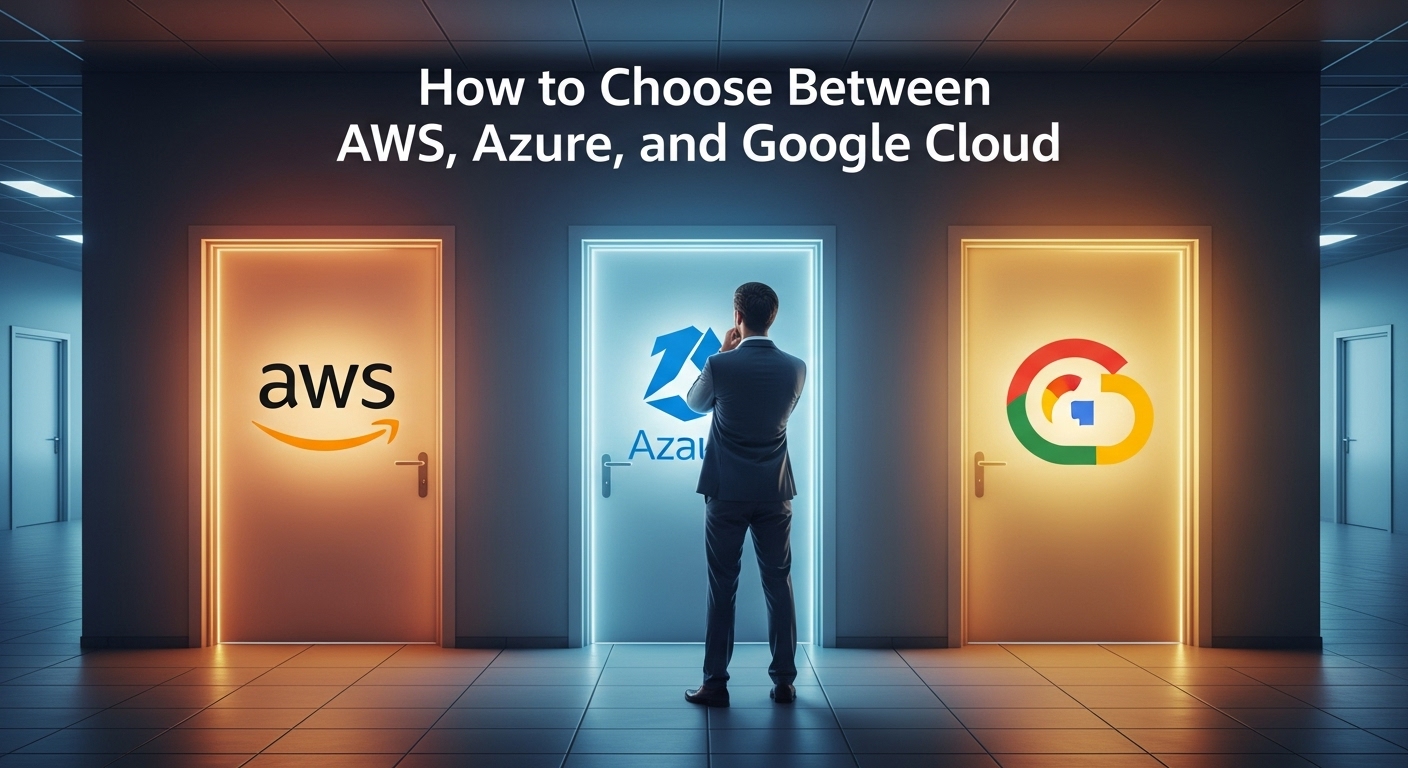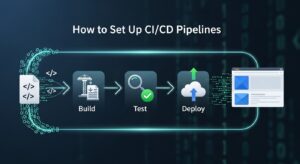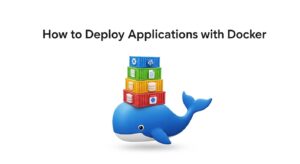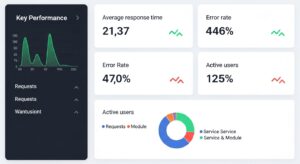When organizations embark on their cloud journey, one question dominates boardroom discussions: how do you choose between AWS, Azure, and Google Cloud? This decision can fundamentally shape your company’s technology infrastructure for years to come.
The cloud computing landscape has evolved into a three-horse race, with Amazon Web Services (AWS), Microsoft Azure, and Google Cloud Platform (GCP) commanding over 65% of the global market share. Each platform offers unique strengths, pricing models, and service portfolios that cater to different business needs.
But here’s the challenge: making the wrong choice can cost your organization millions in migration expenses, productivity losses, and missed opportunities. That’s why understanding the nuances of each platform isn’t just important—it’s mission-critical.
Understanding the Big Three Cloud Providers
Before diving into how to choose between AWS; Azure; and Google Cloud, let’s establish the foundation. Each provider has carved out distinct advantages in the marketplace.
- Amazon Web Services entered the market first in 2006, establishing itself as the pioneer with the most comprehensive service catalog. With over 200 services spanning compute, storage, databases, and emerging technologies, AWS commands approximately 32% of the cloud market.
- Microsoft Azure leveraged its enterprise relationships and Windows ecosystem to capture 23% market share. Azure’s strength lies in hybrid cloud solutions and seamless integration with existing Microsoft products that many enterprises already use.
- Google Cloud Platform may hold the smallest market share at 10%, but it brings Google’s expertise in data analytics, machine learning, and containerization. GCP often appeals to organizations prioritizing innovation and cutting-edge technology.
Factor 1: Service Portfolio and Capabilities
When you choose between AWS, Azure, and Google Cloud, the breadth and depth of available services should be your first consideration.
AWS offers the most extensive service catalog, with specialized offerings for virtually every use case. From simple web hosting to complex machine learning pipelines, AWS typically has a dedicated service. This comprehensive approach means you’re less likely to encounter capability gaps as your needs evolve.
Azure excels in hybrid cloud scenarios and enterprise integration. If your organization runs significant Windows-based infrastructure or relies heavily on Microsoft Office 365, SharePoint, or Active Directory, Azure’s native integration capabilities can streamline operations considerably.
Google Cloud Platform focuses on data analytics, artificial intelligence, and modern application development. GCP’s BigQuery data warehouse, TensorFlow machine learning framework integration, and Kubernetes orchestration (Google invented Kubernetes) represent best-in-class solutions for data-driven organizations.
Consider this: What does your organization need most? Comprehensive service coverage, enterprise integration, or cutting-edge data capabilities?
Factor 2: Pricing Models and Cost Optimization
Understanding pricing structures is crucial when you choose between AWS, Azure, and Google Cloud, as costs can vary dramatically based on your usage patterns.
AWS employs a pay-as-you-go model with numerous pricing tiers and discount programs. Reserved Instances can provide up to 75% savings for predictable workloads, while Spot Instances offer steep discounts for flexible computing needs. However, AWS’s pricing complexity can make cost prediction challenging without proper planning.
Azure’s pricing often appeals to existing Microsoft customers through bundled licensing agreements. The Azure Hybrid Benefit allows organizations to use existing Windows Server and SQL Server licenses in the cloud, potentially reducing costs by up to 40%. Azure also offers similar reserved capacity and spot pricing options.
Google Cloud Platform typically provides more straightforward pricing with automatic sustained use discounts. GCP automatically applies discounts for instances running more than 25% of the month, without requiring upfront commitments. Their per-minute billing (after the first 10 minutes) can also result in cost savings for shorter workloads.
Here’s a practical approach: Calculate costs for your specific workloads using each provider’s pricing calculator. Factor in not just compute costs, but data transfer, storage, and any premium support requirements.
Factor 3: Geographic Presence and Compliance
Your choice of cloud provider must align with your geographic requirements and regulatory obligations when you choose between AWS, Azure, and Google Cloud.
AWS operates the largest global infrastructure with 84 availability zones across 26 geographic regions. This extensive footprint makes AWS suitable for organizations with global reach or specific latency requirements. AWS also maintains the most comprehensive compliance certifications, including SOC, PCI DSS, HIPAA, and region-specific standards.
Azure leverages Microsoft’s global infrastructure to offer services in 60+ regions worldwide. Azure’s strength lies in compliance with government and enterprise requirements, particularly in regulated industries. Azure Government provides dedicated infrastructure for U.S. government agencies and contractors.
Google Cloud Platform operates in 35 regions with 106 zones. While smaller than AWS and Azure, GCP strategically covers major markets and continues expanding rapidly. Google’s infrastructure benefits from the same security and reliability that powers Google Search and Gmail.
Consider these questions: Where are your users located? What compliance requirements must you meet? Do you need data residency in specific countries or regions?
Provider | Regions | Availability Zones | Government Cloud |
AWS | 26 | 84 | AWS GovCloud |
Azure | 60+ | 140+ | Azure Government |
Google Cloud | 35 | 106 | Google Cloud for Government |
Factor 4: Integration with Existing Systems
The ease of integration with your current technology stack significantly impacts your success when you choose between AWS, Azure, and Google Cloud.
If your organization heavily uses Microsoft technologies—Windows Server, SQL Server, Active Directory, Office 365—Azure provides the smoothest integration path. Features like Azure Active Directory Connect, Azure Site Recovery, and Azure Backup integrate seamlessly with on-premises Microsoft environments.
AWS offers broad compatibility with various platforms and programming languages. Its extensive partner ecosystem and marketplace provide pre-built integrations with popular enterprise software. AWS also excels in supporting hybrid architectures through services like AWS Outposts and AWS Direct Connect.
Google Cloud Platform shines when integrating with Google Workspace (formerly G Suite) and open-source technologies. If your development teams prefer Linux, containers, and modern DevOps practices, GCP’s native support for Kubernetes and integration with Google’s developer tools can accelerate development cycles.
Evaluate your current environment: What operating systems do you run? Which databases do you use? What development frameworks are your teams most comfortable with?
Factor 5: Support and Ecosystem
The quality of support and partner ecosystem can make or break your cloud journey when you choose between AWS, Azure, and Google Cloud.
AWS boasts the largest partner ecosystem with over 100,000 partners globally. This extensive network means you’ll likely find specialized expertise for any AWS service or industry-specific requirement. AWS also offers comprehensive training resources through AWS Training and Certification programs.
Microsoft Azure leverages Microsoft’s established enterprise relationships and extensive partner network. Many existing Microsoft partners have expanded their expertise to include Azure services. Microsoft’s support for enterprise customers is well-established, with dedicated account management for large organizations.
Google Cloud Platform, while having a smaller partner ecosystem, focuses on high-quality partnerships with systems integrators and specialized consultancies. Google’s support quality has improved significantly, though it may lack the depth of enterprise relationships that AWS and Microsoft have built over decades.
Consider your support requirements: Do you need 24/7 technical support? Will you require professional services for migration? How important is access to local partners and expertise?
Making Your Final Decision
Now that we’ve explored the key factors to choose between AWS, Azure, and Google Cloud, how do you synthesize this information into a decision?
Start by creating a decision matrix that weights each factor according to your organization’s priorities. For example, if cost optimization is paramount, give pricing models higher weight. If you’re in a regulated industry, emphasize compliance and geographic presence.
Consider running proof-of-concept projects on multiple platforms before making a final commitment. This hands-on approach allows your teams to evaluate real-world performance, usability, and integration capabilities.
Remember that your choice isn’t permanent. While migration between cloud providers requires effort and planning, it’s entirely possible. Focus on making the best decision for your current and near-term needs while building capabilities that provide future flexibility.
Final Notes to Choose Between AWS Azure and Google Cloud
Learning how to choose between AWS, Azure, and Google Cloud requires careful evaluation of your organization’s unique requirements, existing infrastructure, and strategic objectives. Each platform offers distinct advantages: AWS provides comprehensive services and market leadership, Azure excels in enterprise integration and hybrid solutions, while Google Cloud leads in data analytics and modern development practices.
The most successful cloud adoption strategies focus not just on the technology platform, but on organizational readiness, skills development, and change management. Whichever provider you choose, invest in training your teams, establishing governance frameworks, and building cloud-native capabilities.
Your cloud journey represents more than a technology decision—it’s a transformation that can unlock innovation, improve agility, and drive competitive advantage. Take time to evaluate thoroughly, but don’t let analysis paralysis delay your progress. The cloud’s benefits become real only when you begin the journey.
Ready to dive deeper into cloud platform comparisons? Explore comprehensive documentation and free trials from AWS, Microsoft Azure, and Google Cloud to experience each platform firsthand.











